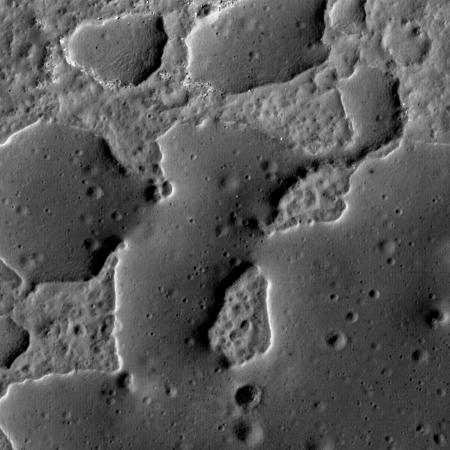A dark dust avalanche on Mars


Cool image time! The two images to the right, both cropped to post here, were taken six years apart by Mars Reconnaissance Orbiter (MRO) of the western lava slopes of the giant volcano Olympus Mons. They show the appearance of a dark dust avalanche during the interim. As noted by members of the MRO science team.
Dust avalanches create slope streaks that expose darker materials usually hidden below a lighter-toned layer. Cascading fine-grained material easily diverts around boulders or alters direction when encountering a change in slope. The dark steak … is approximately 1 kilometer in length that we didn’t see in a previous image. Past avalanche sites are still visible and fading slowly as dust settles out of the atmosphere and is deposited on the dark streaks over time.
We also see boulders and their shadows that are a meter or greater in size. Movement of any of these boulders down the slope could trigger future avalanches.
The appearance of these Martian dark streaks on slopes is actually not uncommon. As more pictures are taken of Mars scientists are beginning to accumulate a large number all across the Martian surface.
What I find fascinating is the wet look of these dark streaks. Below is a close-up of the new avalanche, near its head.
» Read more


Cool image time! The two images to the right, both cropped to post here, were taken six years apart by Mars Reconnaissance Orbiter (MRO) of the western lava slopes of the giant volcano Olympus Mons. They show the appearance of a dark dust avalanche during the interim. As noted by members of the MRO science team.
Dust avalanches create slope streaks that expose darker materials usually hidden below a lighter-toned layer. Cascading fine-grained material easily diverts around boulders or alters direction when encountering a change in slope. The dark steak … is approximately 1 kilometer in length that we didn’t see in a previous image. Past avalanche sites are still visible and fading slowly as dust settles out of the atmosphere and is deposited on the dark streaks over time.
We also see boulders and their shadows that are a meter or greater in size. Movement of any of these boulders down the slope could trigger future avalanches.
The appearance of these Martian dark streaks on slopes is actually not uncommon. As more pictures are taken of Mars scientists are beginning to accumulate a large number all across the Martian surface.
What I find fascinating is the wet look of these dark streaks. Below is a close-up of the new avalanche, near its head.
» Read more





